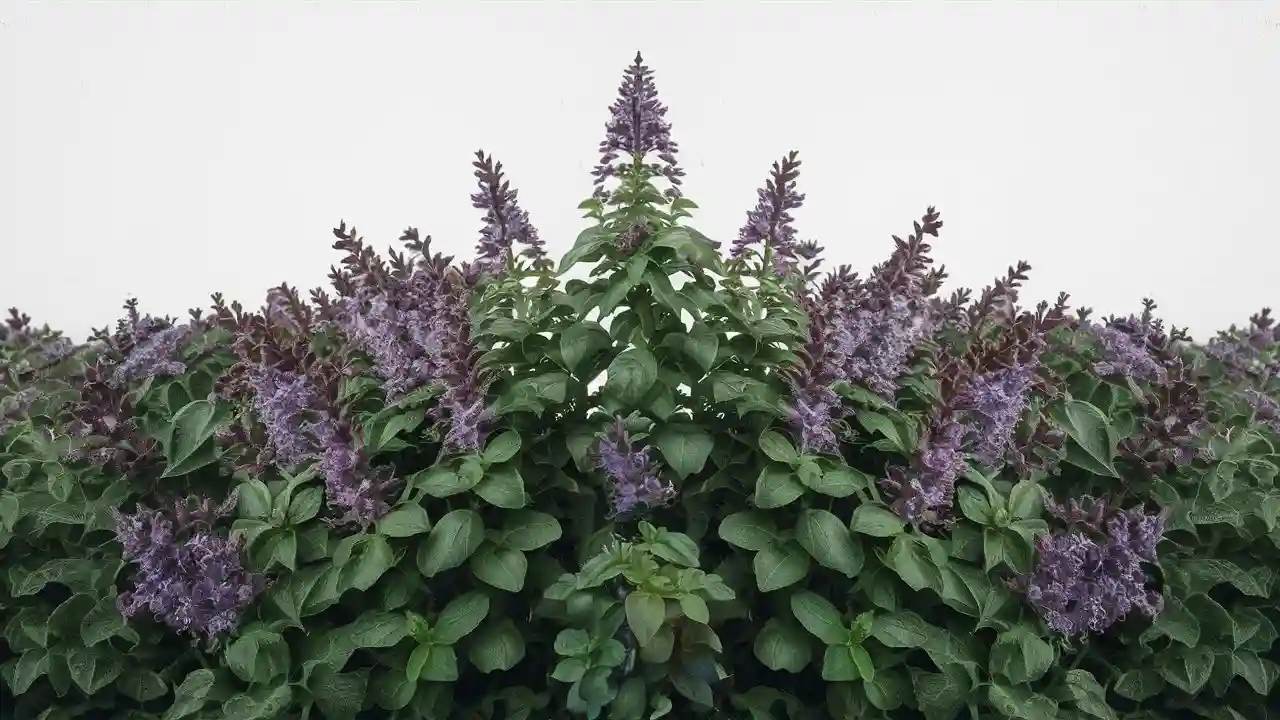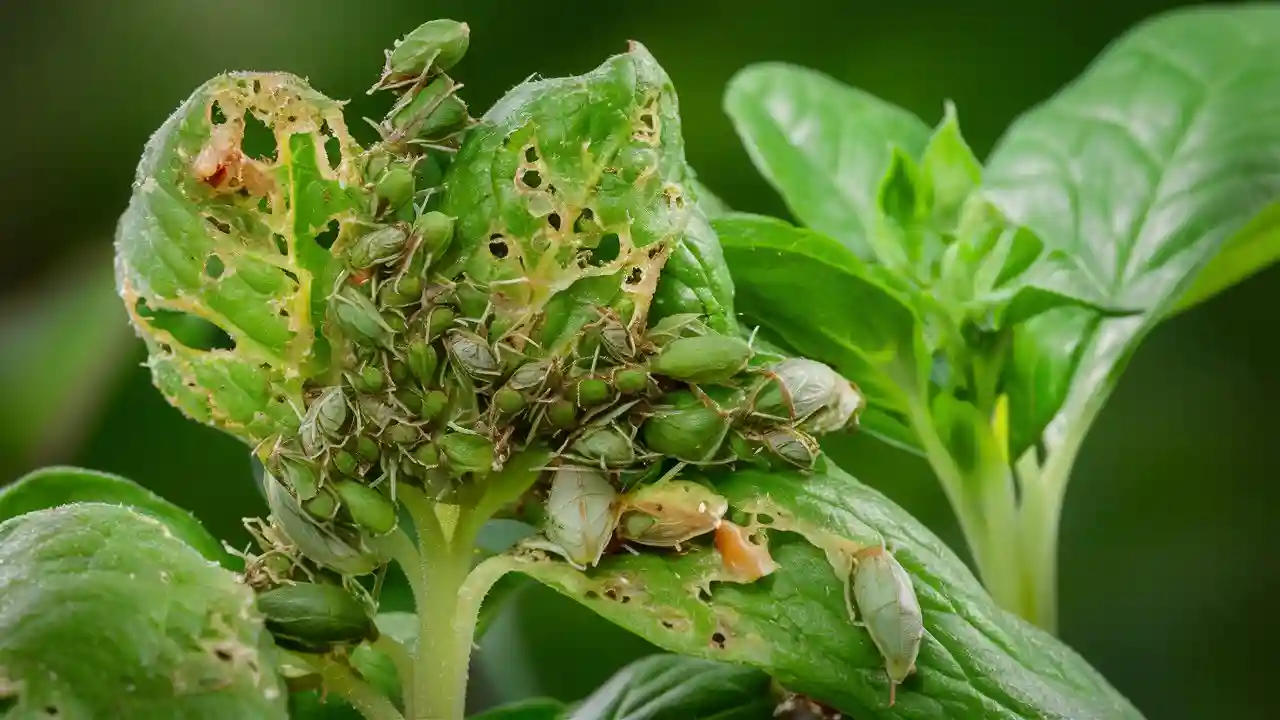Yes, removing flowers from Thai basil is recommended. When the plant flowers, it puts its energy into seed production rather than leaf growth. Removing the flowers encourages the plant to produce more leaves, resulting in a bushier plant with a stronger flavor.
Should I Remove Flowers from Thai Basil?
Whether or not to remove flowers from Thai basil is a common question among gardeners. The answer is yes, you should remove the flowers from your Thai basil plant. Removing the flowers will encourage the plant to put more energy into producing leaves, which is what you want when growing Thai basil for culinary purposes.
When a Thai basil plant flowers, it signals the end of its productive life cycle. The plant will stop producing new leaves and will eventually die back. By removing the flowers, you can extend the plant’s productive life and keep it producing leaves for longer.
In addition to extending the plant’s productive life, removing the flowers will also improve the flavor of the leaves. Flowers have a bitter taste, which can transfer to the leaves if they are not removed. By removing the flowers, you can ensure that the leaves have the best possible flavor.

Thai Basil Flowering
Thai basil (Ocimum basilicum var. thyrsiflora) is a popular culinary herb known for its distinctive flavor and aroma. Like other basil varieties, Thai basil produces flowers during its growing season. However, unlike some other herbs, removing flowers from Thai basil plants can have several benefits.
When a Thai basil plant flowers, it puts energy into producing seeds rather than into producing leaves. This can result in a decrease in leaf production and a decline in the plant’s overall vigor. Removing the flowers before they fully bloom can help redirect the plant’s energy into leaf growth, leading to a more bountiful harvest.
In addition to promoting leaf growth, removing flowers from Thai basil can also improve the plant’s flavor. When a Thai basil plant flowers, it produces compounds that can make the leaves taste bitter. Removing the flowers can help to reduce bitterness and enhance the plant’s overall flavor profile.
Finally, removing flowers from Thai basil can help to extend the plant’s lifespan. By preventing the plant from putting energy into seed production, you can encourage it to continue producing leaves for a longer period.

Remove Flowers from Thai Basil
Removing flowers from Thai basil plants is a common practice among gardeners to encourage bushier growth and enhance the plant’s flavor. When basil plants flower, they put their energy into producing seeds rather than producing leaves. By removing the flowers, you redirect the plant’s energy towards leaf production, resulting in a more bountiful harvest.
Additionally, removing flowers from Thai basil helps maintain the plant’s flavor. As the plant focuses on leaf production, it produces more essential oils, which give Thai basil its distinctive flavor. Removing flowers also prevents the plant from becoming woody and bitter, ensuring a more flavorful harvest.
To remove flowers from Thai basil, simply pinch or cut off the flower buds as they appear. It’s best to remove the flowers before they fully bloom to prevent the plant from putting energy into seed production. Regular removal of flowers throughout the growing season will encourage continuous leaf production and maintain the plant’s optimal flavor.
Thai Basil Plant Care
To ensure a thriving Thai basil plant, proper care is essential. Here are some crucial tips:
Light: Thai basil prefers ample sunlight, at least 6 hours per day. Position your plant in a sunny spot in your garden or on a windowsill that receives plenty of natural light.
Water: Water your Thai basil plant regularly, especially during hot, dry weather. Allow the soil to dry out slightly between waterings to prevent overwatering.
Fertilizer: Feed your Thai basil plant with a balanced fertilizer every few weeks during the growing season. This will provide essential nutrients for healthy growth and abundant foliage.
Pruning: Regularly prune your Thai basil plant to encourage bushier growth and prevent it from becoming leggy. Pinch back the tips of the stems to stimulate new growth and keep the plant compact.
Pest and disease control: Thai basil plants are generally hardy, but they can be susceptible to pests and diseases. Inspect your plants regularly for any signs of infestation or infection. Treat any issues promptly using organic or chemical methods as necessary.
How to Grow Thai Basil
Growing Thai basil is relatively easy, and it can be done in both containers and gardens. To grow Thai basil, you will need to:
1. Choose a sunny location with well-drained soil.
2. Plant the Thai basil seeds 1/4 inch deep in the soil.
3. Water the Thai basil plants regularly, especially during hot weather.
4. Fertilize the Thai basil plants every few weeks with a balanced fertilizer.
5. Pinch back the tips of the Thai basil plants to encourage bushier growth.
6. Harvest the Thai basil leaves as needed.
Basil Plant Care
Basil plants, including Thai basil, require proper care to thrive. Here are some essential tips for basil plant care:
- Sunlight: Basil plants prefer full sun to partial shade. Ensure they receive at least 6 hours of sunlight daily.
- Soil: Basil plants prefer well-drained, fertile soil with a pH between 6.0 and 7.0.
- Watering: Water basil plants regularly, especially during hot, dry weather. Avoid overwatering, as it can lead to root rot.
- Fertilizing: Fertilize basil plants every few weeks with a balanced fertilizer. Avoid over-fertilizing, as it can burn the plant.
- Pruning: Regularly prune basil plants to encourage bushier growth and prevent them from becoming leggy. Pinch off the tips of the stems to promote new growth.
Basil Flowering
Basil plants, including Thai basil, naturally produce flowers as part of their reproductive cycle. While the flowers can be attractive, they can also divert energy away from leaf production. Removing the flowers can encourage the plant to focus its energy on producing more leaves, resulting in a more bountiful harvest.
Additionally, removing the flowers can help prevent the plant from going to seed. When a basil plant goes to seed, it will produce fewer leaves and the flavor of the leaves may become more bitter. By removing the flowers, you can extend the plant’s productive life and enjoy its flavorful leaves for a longer period.
To remove the flowers from a basil plant, simply pinch or cut them off at the base of the stem. Be careful not to damage the leaves or stems when removing the flowers.

Remove Flowers from Basil
Removing flowers from basil plants is a common practice among gardeners. Basil plants tend to put their energy into producing flowers and seeds rather than leafy growth. By removing the flowers, you can encourage the plant to focus its energy on producing more leaves, resulting in a bushier and more productive plant.
To remove flowers from basil, simply pinch or snip off the flower buds or blooms. You can do this as soon as you see them appear, or you can wait until they have fully bloomed. Removing the flowers will not harm the plant and will help it to produce more leaves and a stronger flavor.
In addition to encouraging leafy growth, removing flowers from basil can also help to improve the plant’s flavor. Basil flowers have a slightly bitter taste, which can be transferred to the leaves if they are allowed to remain on the plant. By removing the flowers, you can help to keep the leaves tasting their best.
Overall, removing flowers from basil plants is a simple and effective way to improve the plant’s growth and flavor. By following these tips, you can help your basil plants to thrive and produce an abundance of delicious leaves.

Basil Plant Problems
Basil plants are susceptible to a variety of problems, including pests, diseases, and nutrient deficiencies. Some of the most common problems include:
- Aphids: Aphids are small, green insects that feed on the sap of basil plants. They can cause leaves to curl and turn yellow, and they can also transmit diseases.
- Spider mites: Spider mites are tiny, red, or brown insects that spin webs on the undersides of leaves. They can cause leaves to turn yellow and drop off.
- Whiteflies: Whiteflies are small, white insects that fly around the plant. They can cause leaves to turn yellow and drop off.
- Downy mildew: Downy mildew is a fungal disease that causes leaves to turn yellow and develop a white, powdery mildew. It can eventually kill the plant.
- Fusarium wilt: Fusarium wilt is a fungal disease that causes the plant to wilt and die. It is a very serious disease that can be difficult to control.
- Nutrient deficiencies: Basil plants can also suffer from nutrient deficiencies, such as nitrogen deficiency, phosphorus deficiency, and potassium deficiency. These deficiencies can cause leaves to turn yellow, brown, or purple, and they can also stunt the plant’s growth.
If you are experiencing problems with your basil plants, it is important to identify the problem and take steps to control it. You can find more information on basil plant problems and how to control them online or by talking to your local nursery or garden center.
Basil Plant Pests
Basil plants can be susceptible to various pests, including aphids, spider mites, and whiteflies. These pests can damage the plant’s leaves and stems, affecting its growth and yield. Regular monitoring and prompt treatment are essential to prevent or control pest infestations.
Aphids: Aphids are small, soft-bodied insects that feed on plant sap. They can cause leaves to curl and yellow, and they can also transmit diseases. Aphids can be controlled by spraying the plant with a strong stream of water or using insecticidal soap.
Spider mites: Spider mites are tiny, spider-like creatures that feed on plant leaves. They can cause leaves to turn brown and drop off. Spider mites can be controlled by spraying the plant with water or using insecticidal soap.
Whiteflies: Whiteflies are small, white insects that feed on plant sap. They can cause leaves to turn yellow and drop off. Whiteflies can be controlled by spraying the plant with a strong stream of water or using insecticidal soap.
By following these tips, you can help keep your Thai basil plants healthy and productive. With proper care, you can enjoy a bountiful harvest of this flavorful herb for many seasons to come.
Frequently Asked Questions
Q: Should I remove flowers from Thai basil?
A: Yes, removing flowers from Thai basil is recommended to encourage bushier growth and enhance the plant’s flavor.
Q: Why should I remove flowers from Thai basil?
A: Removing flowers redirects the plant’s energy from seed production to leaf growth, resulting in a more bountiful harvest with better flavor.
Q: When should I remove flowers from Thai basil?
A: Remove flowers before they fully bloom to prevent the plant from putting energy into seed production.
Q: How do I remove flowers from Thai basil?
A: Simply pinch or cut off the flower buds or blooms as they appear.
Q: What are the benefits of removing flowers from Thai basil?
A: Removing flowers promotes bushier growth, enhances flavor, and extends the plant’s lifespan.
Q: What are some common problems with basil plants?
A: Basil plants can be susceptible to pests such as aphids, spider mites, and whiteflies, as well as diseases like downy mildew and fusarium wilt.
